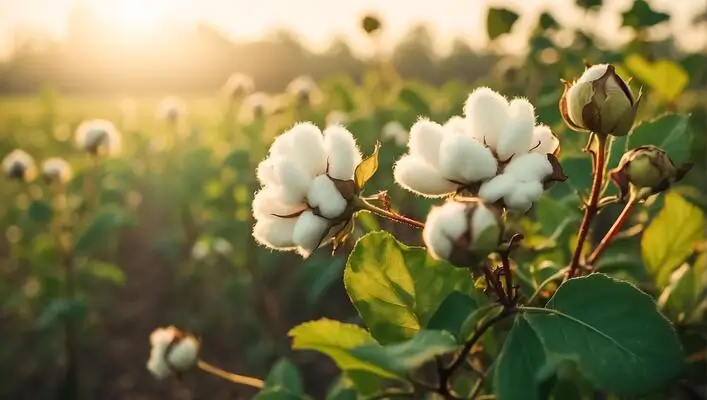
Throughout the growth stages, cotton crops face various adversities, whether it be pest incidence or disease severity. Along with these problems, nutrient deficiencies in cotton crops are more prone to occur. It is said that diseases like Alternaria Leaf Spot and deficiencies in some major nutrients go undetected in the early stages; then, they can reduce total production by as much as 25%.
What are the nutrient deficiencies in cotton? What are the symptoms of these deficiencies? And what fertilizers can we apply to manage them?
What are the nutrient deficiencies in cotton?
Nutrient deficiencies in any crop pose a challenge, but in the case of cotton, they directly impact its growth and yield, particularly during the reproductive phase. Therefore, it’s crucial to ensure that t0he crops receive adequate nutrients during their flowering and fruiting periods.
If you observe symptoms such as reddening of the leaf blade, yellowing, delayed flowering or poor boll retention, these could indicate various nutrient deficiencies.
But how do you identify the deficient nutrient based on these symptoms?
Nitrogen Deficiency in Cotton
We all know that Nitrogen is a mobile element, and as it translocate to developing plant parts, nitrogen deficiency is first seen in older leaves.
What are the symptoms of nitrogen deficiency in cotton?
Older leaves exhibit yellowing symptoms, and in severe cases, you can observe reddening of leaf blades. The leaves also display stunted growth with a yellowish-green colour.
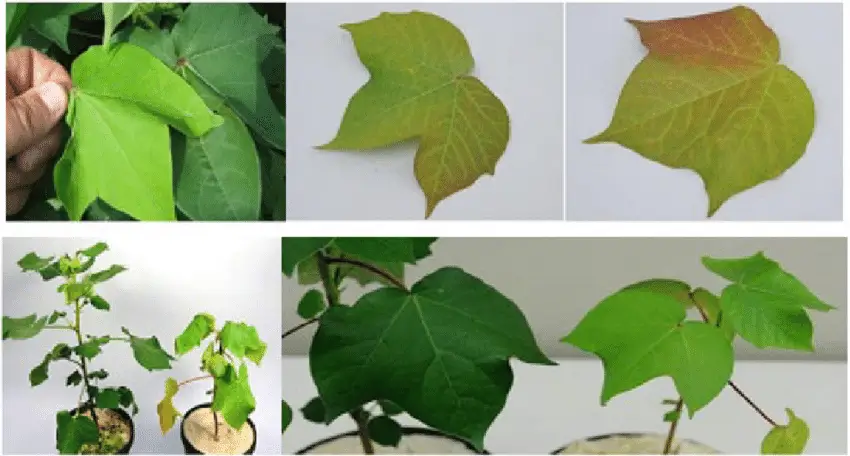
Nitrogen is crucial for cotton since it directly affects yield; deficiency leads to reduced boll retention and premature plant maturation.
What causes Nitrogen deficiency in Cotton Plants?
There are many factors which lead to the N deficient cotton plants. But mainly:
- Soil type: N deficiency is high in sandy and well drained soils as there is fast nutrient leaching
- Excessive irrigation and heavy rains are not good for the cotton plants as overwatering leads to N deficiency
- High levels of nutrients like Zn, K, Mn and Cl also results in N deficiency in cotton plants
Phosphorus Deficiency in Cotton
Are you observing smaller, dark green leaves on your cotton plants? Then beware it might be due to phosphorus deficiency.
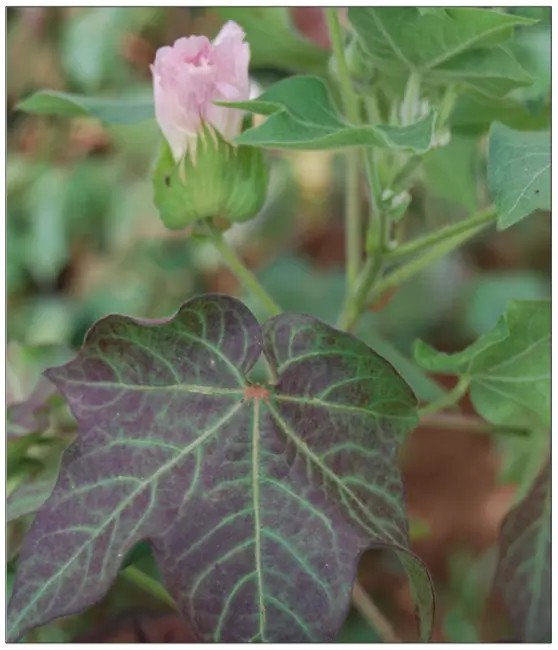
Other symptoms include stunting of plants, purplish leaves, poor boll retention and delayed flowering.
How is phosphorus deficiency caused in cotton?
- Phosphorus deficiency occurs during boll development if the high nutrient demand at this stage is not met.
- Drought conditions or disease incidence can sometimes lead to decreased absorption of water and nutrients by roots, which causes the deficiency of phosphorus.
- Low soil organic matter content and iron-rich soils can also cause problems.
Potassium Deficiency in Cotton
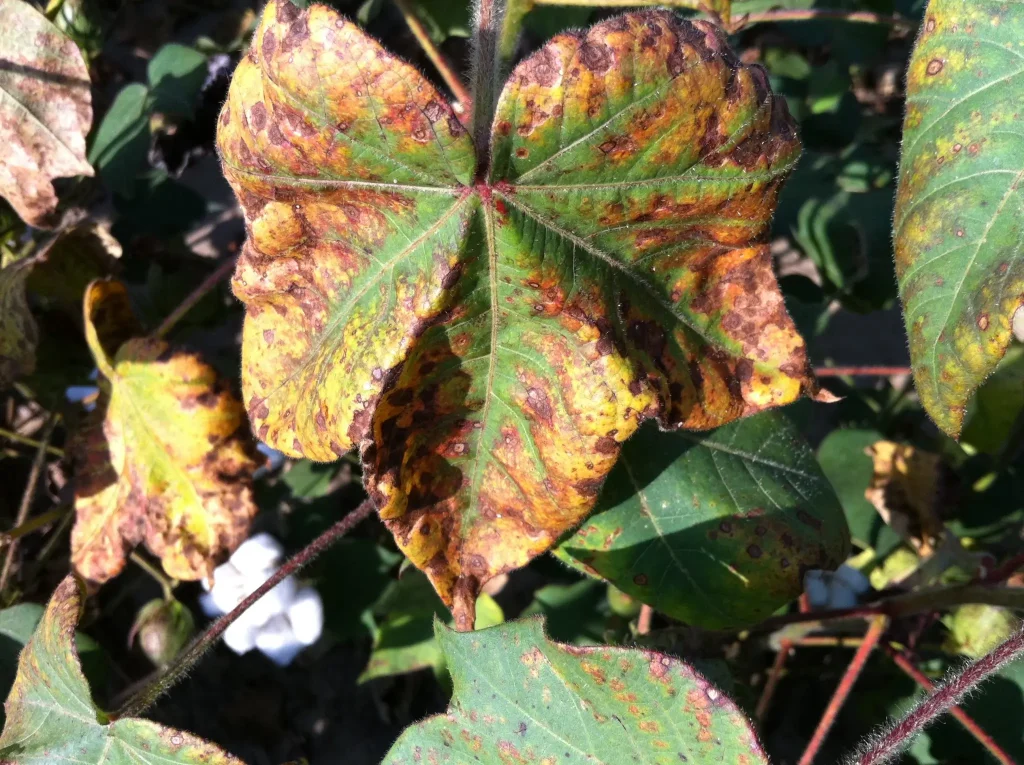
If the deficiency occurs before flowering, it mainly appears in older leaves first, showing light green to gold mottling between the veins. In later stages, it causes yellowing, browning and necrosis of the leaf margins.
If the deficiency happens in the late season, symptoms first appear in the younger leaves, eventually resulting in premature leaf shedding, underdeveloped bolls, decreased lint quality and poor yield. This is why potassium is important to cotton crops.
What causes potassium deficiency in cotton?
- Dry, hot conditions can cause these symptoms.
- An underdeveloped root system may also result in potassium deficiency.
- Low moisture conditions lead to potassium deficiency, as cotton mainly takes up potassium by diffusion.
So, how can we manage these deficiencies in cotton?
One Solution to Manage Nitrogen, Phosphorus and Potassium Deficiencies in Cotton
Providing Nitrogen, Phosphorus, and Potassium to cotton plants from the sowing stage to the harvesting stage is important. For example, supplying Phosphorus and Potassium during the reproductive stage aids in flower and boll formation, plant health and boll development.
Criyagen Bio NPK Kit: Protects Plants from Nutrient Deficiencies in cotton
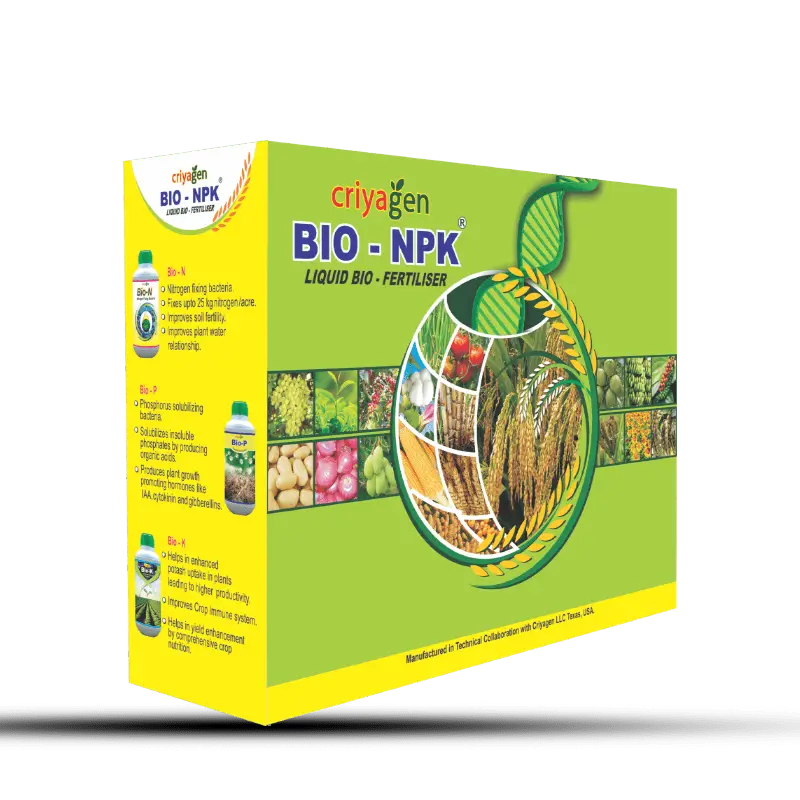
Nitrogen, phosphorus and potassium requirements can be met by applying Urea, DAP, and SOP or MOP during the critical stages of plant growth. However, excessive use of nitrogen fertilizer can lead to resource waste and environmental pollution.
If, after applying these fertilizers to cotton plants, you are still observing these symptoms, it means it is better to use the nutrients present in the soil.
Composition of Criyagen Bio NPK Kit
- Nitrogen Fixing Bacteria
- Phosphate Solubilising Bacteria
- Potassium Mobilising Bacteria
How does the Bio NPK Kit fix nutrient deficiencies cotton?
- The Criyagen Bio NPK Kit contains nitrogen-fixing bacteria, which helps in continuously fixing nitrogen at a rate of 50 kg per hectare.
- Insoluble phosphates found in the rhizosphere are made available to the plants by the action of phosphate-solubilizing bacteria.
- Potash-mobilising bacteria make potash available to cotton plants throughout their growth stages.
This way, applying the Criyagen NPK kit makes nitrogen, phosphorus and potassium available throughout the cotton crop stage, especially during critical stages like flowering and boll development, and addresses the issue of nutrient deficiency.
Learn how to control bollworms in cotton: Read more here
Application of Criyagen Bio NPK in the field
Cotton farming can significantly benefit from the use of Criyagen Bio-NPK, a balanced organic fertilizer as it provides essential nutrients to the crop.
Application Methods for Cotton Crops
1. Using Traditional Irrigation:
Preparation: Dissolve all three components of Bio-NPK into 100 litres of water.
Application: Apply this nutrient-rich solution to one acre of cotton crop along with your regular irrigation water. This method ensures that the nutrients are evenly distributed throughout the field.
2. Using Drip Irrigation:
Preparation: Mix all the Bio-NPK components into 100 litres of water.
Application: Introduce the solution through the drip irrigation system, allowing it to reach one acre of cotton crop. This technique is efficient and conserves water while providing a steady supply of nutrients directly to the plant roots.
3. With Vermicompost / FYM / Soil:
Preparation:Mix the entire contents of Bio-NPK in 10 litres of water.
Combine this solution with 50-100 kg of vermicompost or Farm Yard Manure (FYM).
Application: Spread the enriched compost evenly over one acre of cotton crop field just before irrigation. This method enhances soil fertility and promotes robust plant growth.
4. Special Preparation for Enhanced Nutrient Delivery:
Preparation:
Take a 200-litre barrel.
Add 2 kg of black-colored jaggery and 2 kg of gram flour.
Add one kit of Bio-NPK mix at intervals, allowing the mixture to ferment for 2 days.
Application: After fermentation, apply the mixture through drip irrigation or soil drenching. This fermented solution is highly effective in boosting soil microbiota, improving nutrient availability, and enhancing overall plant health.
Get the Criyagen Bio NPK Kit delivered straight to your doorstep! Download AgriApp today and add these insecticides to your cart.
Don’t forget to apply our special coupon code RR150 for added savings. Happy shopping!